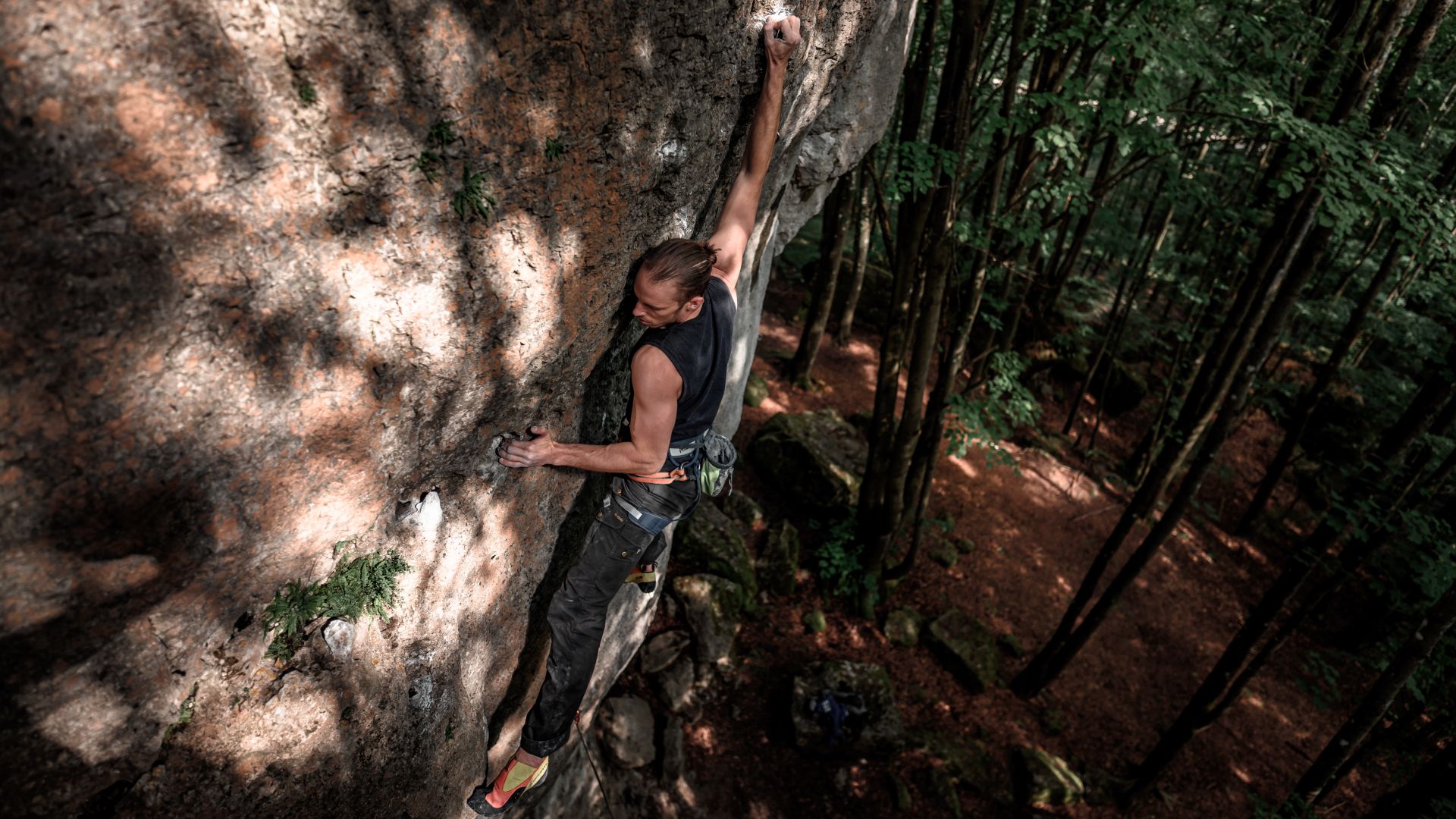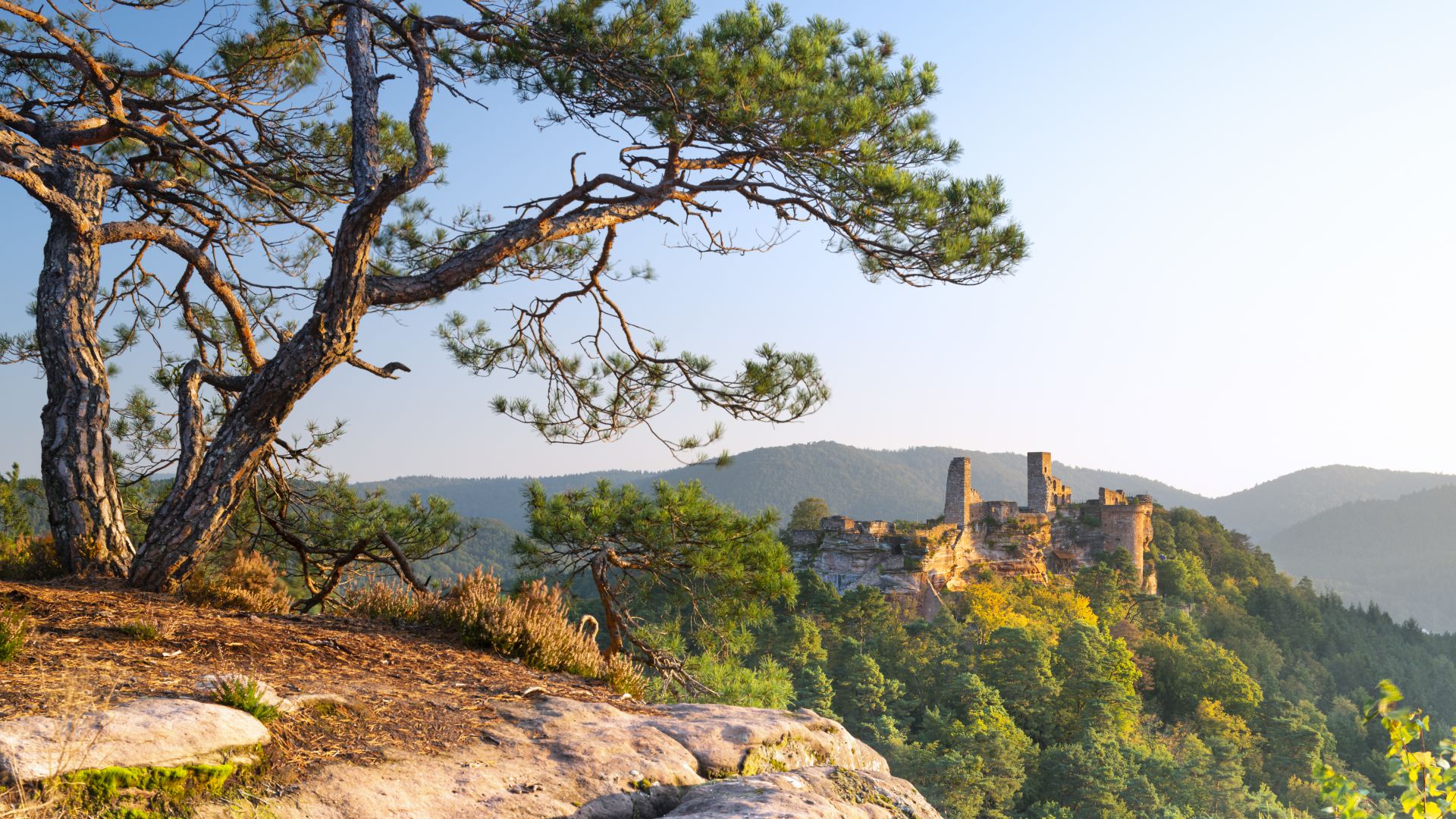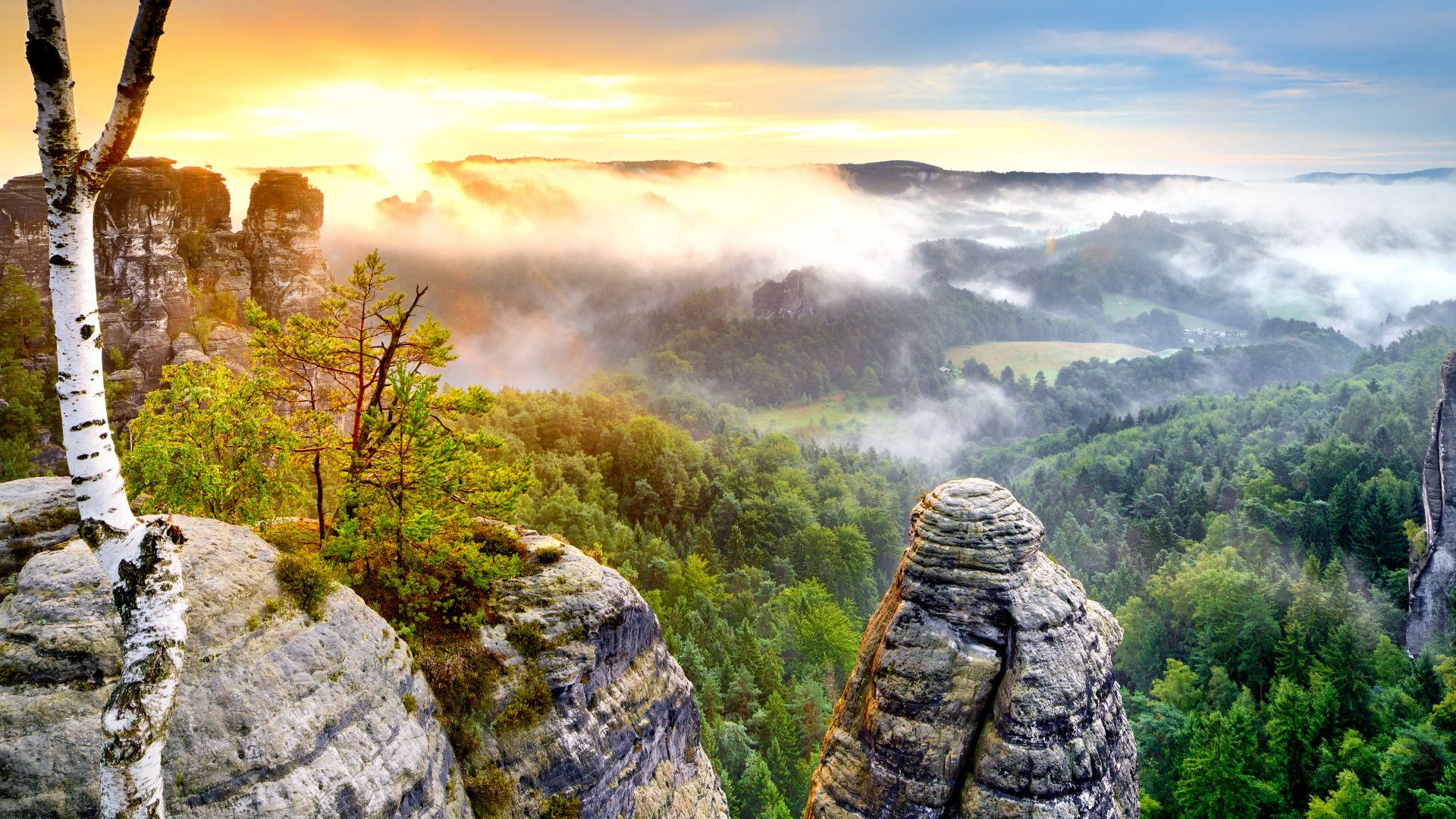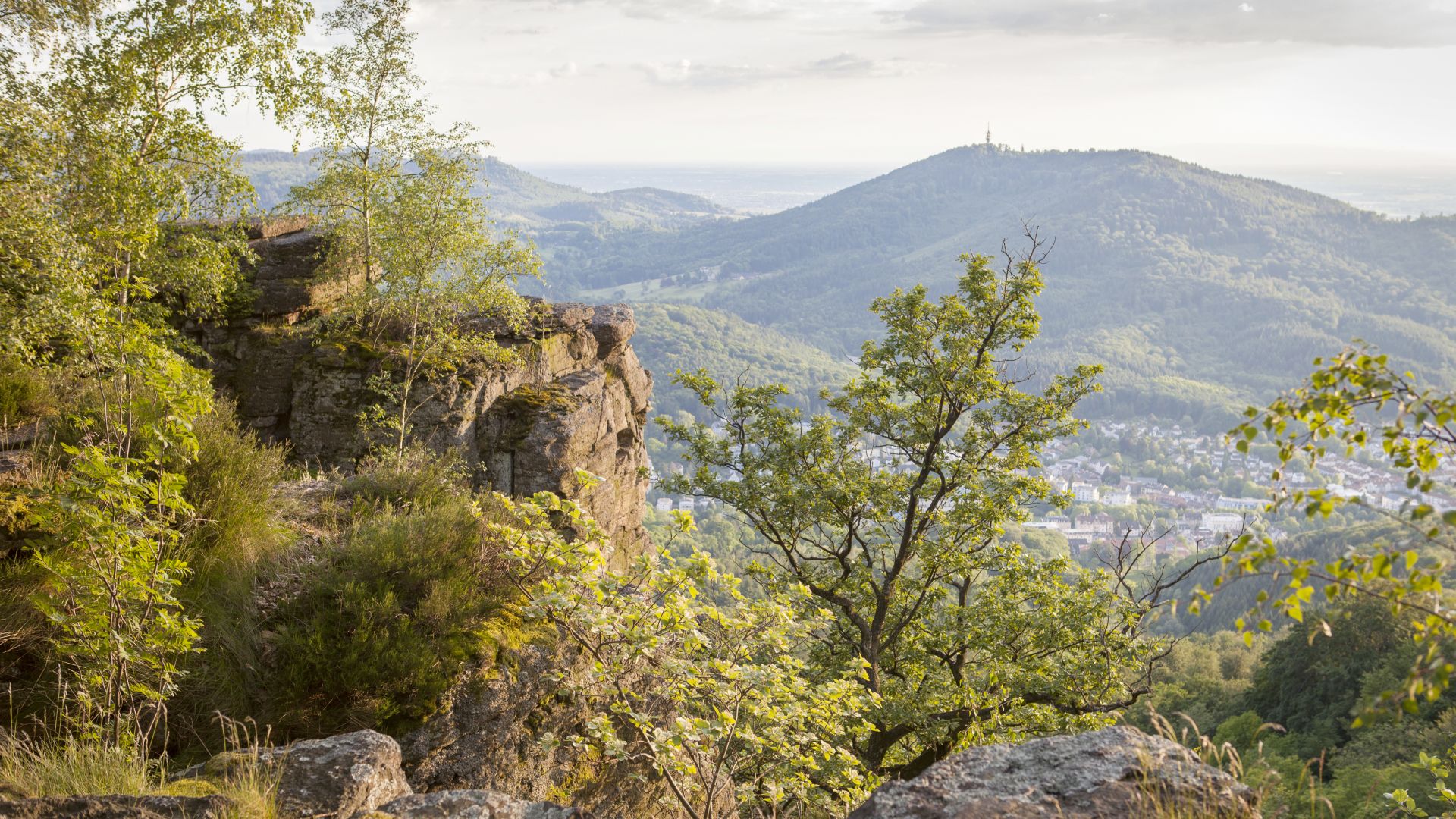Nature & Outdoor Activities
Climbing paradise: top regions for climbing fanatics
Breathtaking landscapes and pulse-racing ascents guaranteed to make you feel alive: climbing combines sport and nature in one beautiful experience. It's no wonder climbing is in fashion. Especially as, with tens of thousands of routes, Germany offers plenty of choice for every ability level.
Which one will you pick? A long route demanding fitness over technical skills, or a trickier one with short, steep sections? To be accompanied by a climbing guide, or the safe footholds of a via ferrata? Rope team or solo? In fact, you don't always have to climb too high up. Many people also enjoy bouldering, where you climb closer to the ground without a rope or harness. However, appropriate equipment and some amount of practice are essential everywhere. The most important thing is to have an idea of what to expect on site, so as not to overestimate your abilities and put yourself in danger. Speaking of ideas: here we present five of Germany's outstanding climbing regions as potential holiday destinations.
Franconia: climbers' heaven
 Climbing area in the Franconian Jura
©Adobe Stock (Michael)
Climbing area in the Franconian Jura
©Adobe Stock (Michael)
Around 1,000 crags and over 12,000 routes from super easy to super difficult: the Franconian Jura between Erlangen, Bamberg and Bayreuth enjoys the reputation of being one of the best climbing areas in Europe. How come? With their cracks, chimneys, edges, overhangs, fist jams and finger holes in the rock, these limestone cliffs of all shapes and sizes promise truly varied and challenging experiences. What is particularly appealing is that most of the crags are hidden in the forest and relatively small. It's a good idea to use guidebooks, guides or apps to show you the way to secluded highlights. South of Franconian Switzerland, the Altmühltal is the next top spot. Grey, often pitted limestone also dominates here, although the climbing is often very technical and vertical.
Palatinate: climbing treasures and bouldering dreams
 Dahn: Felsenland with Altdahn castle massif in the background
©DZT (Francesco Carovillano)
Dahn: Felsenland with Altdahn castle massif in the background
©DZT (Francesco Carovillano)
Located between Pirmasens and Landau, the often freestanding red sandstone cliffs are up to 60 metres high and act like magnets for the climbing community. The tantalising cliffs themselves are impressive, as well as the views from the top – the 'Devil's Table' near Hinterweidenthal and the 'Dahner Felsen' are icons of this landscape. Then there's the technical challenge – think narrow gaps, honeycomb weathering, cracks, slabs and horizontal overhangs. Although the Palatinate , home to around 1,000 climbing routes, is considered a relatively small climbing area, there's something for every experience level, especially with one of many active climbing guides nearby. They're sure to point out that the Southern Palatinate in particular is known for its traditional climbing routes. You'll need to use an auto belay here. It's also recommended that you avoid using chalk (white magnesium powder). This also applies to the numerous bouldering crags on the Kalmit, the highest mountain in the Palatinate Forest, and in the Haardt mountain range.
Saxon Switzerland: first-class climbing land
 Saxon Switzerland National Park: View over the Osterzgebirge at sunrise
©DZT (Francesco Carovillano)
Saxon Switzerland National Park: View over the Osterzgebirge at sunrise
©DZT (Francesco Carovillano)
On its way from the Czech Republic to Dresden, the Elbe winds through a huge plateau that is perfect for climbing. 1,134 mostly dark sandstone peaks shoot upwards, some of them quite steep or mystical in appearance. Conveniently, they have plenty of cracks, steps, handles and footholds. So it's no wonder that climbers have been exploring the Elbe Sandstone Mountains for over 150 years. And under strict conservation rules: no chalk, but knot-friendly ropes and hooks with fairly wide spacing. In principle, this makes it more difficult for beginners in the self-proclaimed 'birthplace of free cimbing', but it is not only the Schrammstein area that makes up for this with a number of novice-friendly trails. Those looking for greater challenges will find them on the Falkensteig and on the 'Alter Weg' on the Daxenstein. While there are hardly any routes of above-average difficulty among the total of around 10,000 routes, there are certainly many with above-average panoramic views.
Black Forest: great enthusiasm for simpler routes
 Baden-Baden: Battertfelsen
©Baden-Baden Kur & Tourismus GmbH
Baden-Baden: Battertfelsen
©Baden-Baden Kur & Tourismus GmbH
Germany's largest contiguous low mountain range has been known as a hiking destination for generations, but more and more climbing fans have also been flocking to the Black Forest for some time now. With gneiss, granite, sandstone and porphyry, the variety of rocks here is unrivalled. Beginners will be pleased to hear about the many climbing gardens, too – guaranteed fun. This is especially true for the Battert near Baden-Baden, with its more than 300 (very) easy routes. Beginners shouldn't be put off by demonic names such as Devil's Rock or Black Rock either, as there are easier alternatives as well as moderately difficult ones. The same applies to the 'Gfäll' near Freiburg, which is characterised by cliffs up to 70 metres high and is the largest and most popular climbing area in the southern Black Forest. Professionals, on the other hand, know that they'll find magnificent views throughout the region, but hardly any really tough challenges.
Harz: taking it easy on walls of granite
The peaks, walls and ridges in the northern part of the low mountain range stretching across Lower Saxony, Saxony-Anhalt and Thuringia form one of the most unique climbing areas in Germany. In the Oker valley in particular, the rough granite, weathered into wild shapes, is crying out to be climbed. And this cry of more than 100 rocks drives climbers in droves, especially beginners, to this region. The area is perfect for those starting out: many of its 1,200 or so routes are often on a slope and allow for leisurely ascents. The 'Steinernen Renne' near Wernigerode offers spots for scrambling, which combines hiking and climbing. Wedges and friends, as climbing devices are called, are part of the protection on many routes, which adds to the appeal for beginners. But make no mistake: although there are no really difficult routes in the Harz Mountains, some are still quite challenging, for example in the popular Steinbach Valley climbing area in the eastern Harz Mountains.